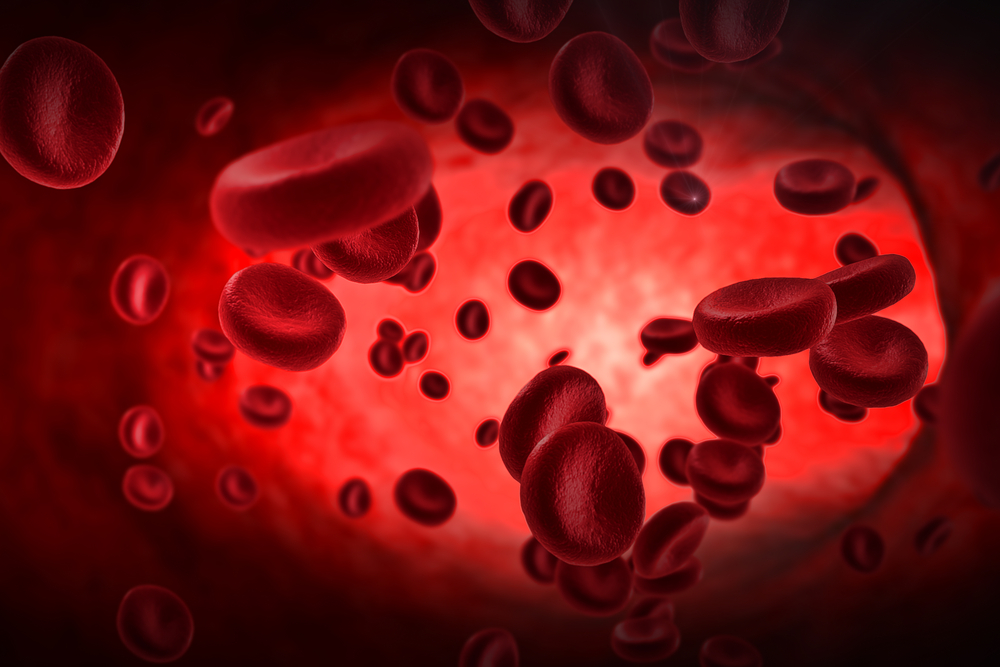Blood Type, Von Willebrand Factor Play No Role in FVIII Levels in Non-Severe Hemophilia A, Study Suggests

In contrast to observations in the general population, blood type and levels of von Willebrand factor (VWF) don’t appear to influence factor VIII (FVIII) levels in people with non-severe hemophilia A, a study reports.
Moreover, age was found to play only a minor role in FVIII levels in these patients.
The study, “Influence of blood group, von Willebrand factor levels, and age on factor VIII levels in non-severe haemophilia A,” was published in the Journal of Thrombosis and Haemostasis.
Hemophilia A is caused by a lack of FVIII, a protein involved in blood clotting. FVIII binds to VWF, which protects and helps maintain FVIII in the circulation to help reduce hemorrhage.
Previous studies demonstrated that VWF, age, and ABO blood groups influence the levels of FVIII in the general population, but the relation between these factors and FVIII in non-severe hemophilia has not been extensively studied.
To address this, researchers at the University of Vienna and their colleagues conducted a study that included 89 adults, at a median age of 51, with non-severe hemophilia A from four hemophilia centers across Austria. As controls, the team recruited 82 healthy men.
The lowest FVIII level in a patient’s history was used for diagnosis and assessment of disease severity. Mild and moderate hemophilia was determined according to guidelines established by the Scientific and Standardization Committee of the International Society on Thrombosis and Haemostasis.
Researchers assessed FVIII activity using a one-stage clotting assay and a chromogenic substrate assay. They also evaluated VWF activity, and measured antigens (proteins) against FVIII and VWF. In addition, they examined links to mutations in the F8 gene, which provides instructions for making FVIII.
In the hemophilia A group, 47 patients (52.8%) belonged to the O blood group, and 42 (47.2%) to non-O groups. In the control group, 32 participants (39%) belonged to the O blood group and 50 (61%) had a different blood type. Eighty-five patients showed 46 different mutations in the F8 gene.
Results showed no significant differences in FVIII activity across the blood type groups in hemophilia A patients. Neither was a correlation found between FVIII activity and VWF activity or levels in patients.
In controls, those with a non-O blood type had higher levels of FVIII than those in the O group — 150% versus 109.5%. The activity of VWF was also higher in the non-O group than in the O group — 117% versus 71%.
Healthy individuals from the non-O groups also had higher levels of VWF (126%) than those in the O group (86%). In fact, the team estimated that a 1% increase in VWF levels or activity correlated with a 0.73–0.77% increase in FVIII activity.
Next, they analyzed the influence of age on FVIII and VWF levels in hemophilia patients. The association between age and FVIII activity was not significant, but there was a weak correlation between older age and higher FVIII levels. A similar association was also found between patients’ age and VWF levels and activity.
Further analysis showed that neither blood group, VWF levels, nor age were significantly associated with FVIII activity in patients. However, in healthy individuals, the combination of blood group, VWF levels, and age explained 61.3% of the variation in FVIII activity.
These findings indicate that although factors such as age may influence FVIII levels in non-severe hemophilia A, genetic mutations are likely the main drivers mediating this protein’s levels, the scientists said.
“We conclude that for the assessment of FVIII levels in patients with mild or moderate haemophilia A neither the ABO, nor the VWF level, have to be taken into account. Age has to be considered a minor modification factor, as there is a consistent, but weak, increase in FVIII levels with age,” they wrote.
“These aspects are important in daily practice, when a diagnosis of non-severe haemophilia A has to be made,” they added.





